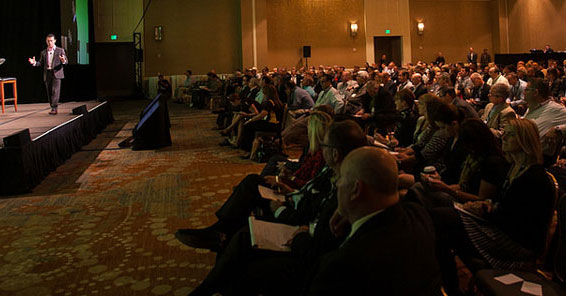The Power of Service Recovery – 5 Tips To Save a Customer

Everyone screws up. The problem is what you do to keep the customer from defecting. Often, “I am sorry” will work. If you have a monopoly, “I am sorry” is fine. However, most of us have competition, and the cost of losing a customer is huge. Very few people know the cost of a defection, so if you have a retail store, gym, hair salon, or any one of thousands of other businesses, what is the real cost of losing a customer?
Firms like Federal Express do not know how to spell the words service recovery. They are in essence a monopoly. I get a 60% discount off their international rates, so I am stuck with them. Recently, I was in Hilton Head Island, South Carolina. My wife Pat and I got married there 45 years ago, so we came back.
In many places, customer service was great. At several places it was awful, and we would never go back. I went to Tripadvisor and made my comments. These comments and my rating will be there for years. The problem is that the employees didn’t care and management believes there are millions of new potential customers. It appears there are more than 50 different outlets you can advertise in, just within Hilton Head Island.
Most employees and owners figure a customer will never come back. They are wrong. Superior customer service creates word-of-mouth advertising. It is free and 100 times less expensive than paid advertising and capital renovation. We went back to one restaurant twice. Great food. Good service. If we spend $35 on a meal (we don’t buy appetizers, drinks or desserts), how do you figure out the cost of defections?
At another restaurant, we had been there 35 times, according to their software. Over the past few years, this came to $1,225. If we keep going there for another 10 years and have similarly positive experiences, we are essentially a lifetime customer. This restaurant is very good at service recovery. Their food is reliably good and their customer service is excellent. If we are unhappy with the meal or service, it’s not just the price of a meal walking out the door forever, it’s the loss of a lifetime customer. This is why service recovery is so important.
My monthly membership fee at a local fitness club comes to about $960 a year. I have no love for them because their customer service is weak. They are the only place close to my home that has indoor tennis courts, and my best friend likes to play there. They have a monopoly. They have never practiced service recovery. If he stopped playing tennis there I would immediately drop my membership. I played there tennis today. The nets have huge holes in them and the water fountain has had warm water for more than 5 years. They never fixed it.
When you make a mistake or screw up, you have to solve the problem within 60 seconds if you want to keep the customer. Keep in mind that most employees don’t care and think the owner is rich. Most owners have no service recovery system in place. Almost all employees fall back on rules, policies, and procedures, and the hell with the customer.
How do you save a customer?
More importantly, how do you turn around an upset customer within 60 seconds so they then believe they are dealing with the Greatest Company on Earth? To make this work, every employee must be empowered and master the following skillset.
1. Act quickly. All this must happen within 60 seconds. There is no time to move this up the chain of command. What the employee does in the moment is magic.
2. Take responsibility. It’s okay to say, “We screwed up,” or “It’s my fault,” or “We messed up.” The chances of customers hearing these words will be close to a miracle, but they can work magic. Don’t lie or pass the problem off to someone else or try to move it up the chain of command. Again, all this must happen within 60 seconds for the magic to work.
3. Be empowered. Make a decision in favor of the customer on the spot. When I ask an employee if they can make an empowered decision, they often say “What do you mean?” or “Wouldn’t I be fired?”
4. Compensate the customer. Every organization has products and services of high value and low cost. Give the customer something of value where they say, “Wow, cool, great, thanks!” Being cheap does not work. One of management’s greatest fear is that an employee will give away too much. Think what would happen if thousands of your customers were over happy. You only wish. If the restaurant can’t seat you at 7 p.m. for your party of four for another 30 or 40 minutes, invite them into the bar area to have drinks on the house until they can be seated. Your real cost for two drinks per person is $8. And what do you think they are saying and doing every time they order a drink? Another 100 to 1,000 people will hear about this because of Facebook, Twitter, Instagram etc. All for $8.
My wife Pat said she has never had a hair salon practice service recovery. In the Twin Cities, there are probably 500 places that cut women’s hair. She spends $86 once a month. She had been going to one salon for 20 years. That is $1,032 a year, or $20,640. They cut her hair too short last time. She never told anyone at the salon. And she’s not going back. I asked if they would ever give her a free haircut and was shocked to hear her response. She said, never. They just lost $20,640.
Generosity pays off over the long term
The more generous the service recovery, the more of an impact it has. The cheaper you are, the smaller the impact. Your goals should be:
-
Get the customer to come back.
-
Have them feel that you really care.
-
Have them tell their friends.
If the service was so bad, many customers will simply never return, regardless of the offer. Meanwhile, you are hoping this bad customer experience was a one-off occurrence or rarely happens. A well-executed service recovery buys you a second chance to impress the customer.
Research shows that fewer than 2% of companies in the U.S. practice service recovery. Other research reports that at least 80% of employees lie when there is a problem, hoping the customer will just disappear before their manager or boss notices.
I suggest every organization come up with a list of at least 10 products and services your employees can give away free and on the spot when they or someone else makes a mistake.
For more on service recovery see my books Achieving Excellence Through Customer Service and Loyal for Life.
John Tschohl is a professional speaker, trainer, and consultant. He is president and founder of Service Quality Institute, with operations in more than 40 countries. He is considered one of the foremost authorities on service strategy, success, empowerment, and customer service. His monthly strategic newsletter is available online at no charge. He also can be reached on Facebook, LinkedIn, and Twitter.
Share this Feature
Recommended Reading:
| ADVERTISE | SPONSORED CONTENT |
STAY CONNECTED
Subscribe to our newsletters to stay informed on the hottest trends in Franchising.
FRANCHISE TOPICS
- Multi-Unit Franchising
- Get Started in Franchising
- Franchise Growth
- Franchise Operations
- Open New Units
- Franchise Leadership
- Franchise Marketing
- Technology
- Franchise Law
- Franchise Awards
- Franchise Rankings
- Franchise Trends
- Franchise Development
- Featured Franchise Stories
| ADVERTISE | SPONSORED CONTENT |








 The franchise listed above are not related to or endorsed by Franchise Update or Franchise Update Media Group. We are not engaged in, supporting, or endorsing any specific franchise, business opportunity, company or individual. No statement in this site is to be construed as a recommendation. We encourage prospective franchise buyers to perform extensive due diligence when considering a franchise opportunity.
The franchise listed above are not related to or endorsed by Franchise Update or Franchise Update Media Group. We are not engaged in, supporting, or endorsing any specific franchise, business opportunity, company or individual. No statement in this site is to be construed as a recommendation. We encourage prospective franchise buyers to perform extensive due diligence when considering a franchise opportunity.